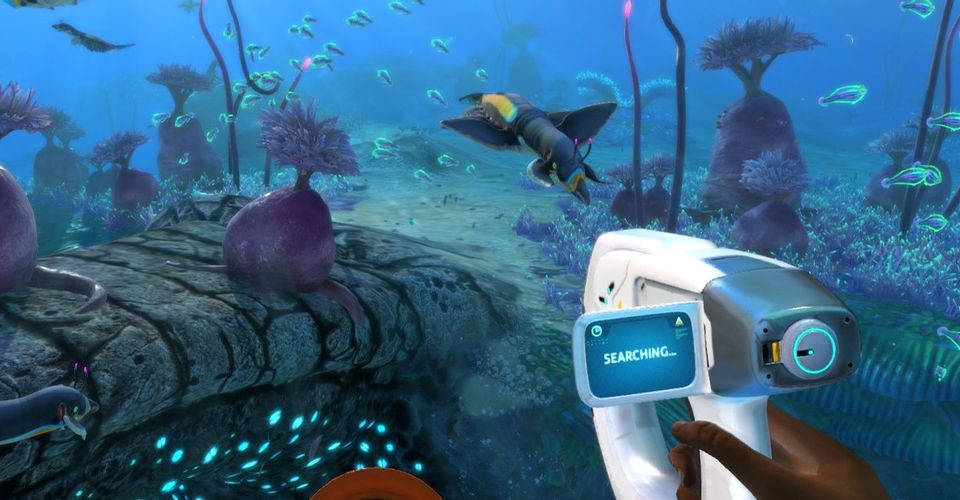How Subnautica: Below Zero Is Better Than The First Game

The follow-up to one of the biggest indie releases of the last decade, Subnautica: Below Zero finds players once again stranded on planet 4546B. It offers some substantive improvements over its predecessor, allowing for a more enjoyable experience as players explore the depths of the globe-spanning ocean they will once again call home.
Below Zero came out of its nearly two year-long early access period with an official 1.0 update on May 13th, and developer Unknown Worlds used that time to build in some formidable upgrades to the Subnautica formula. On the surface, Below Zero is a similar experience to the previous game, despite a completely new environment and content, but there are a number of incremental improvements that make the experience feel fresh.
Many game elements will be immediately familiar to players of the first title, especially regarding the interface. These improvements tend to be subtle (owing in part to Below Zero not quite being a full Subnautica sequel), but their immediate effects on gameplay are undeniable. Aside from some extra polish generally, features like the display of battery life and food condition on item icons makes keeping track of resources a lot more intuitive, and being able to pin crafting blueprints to the main screen while exploring is a new feature that will be hard to live without when returning to the first game.
Subnautica: Below Zero Has A Condensed Story, New Vehicles, & A Faster Pace

What’s also readily apparent upon starting the sequel is that where Subnautica opted for a vast, lonely experience, Below Zero provides something more compact, using story to propel players forward. This leads to a cast of deeper characters and recordings of conversations between them, which combine with snappy writing to keep the narrative moving. Even the player’s PDA assistant has gotten an upgrade, doubling down on the original game’s subtle dry humor with a little more personality and a lot more snark.
This emphasis on personality extends to the main character as well. Players now control Robin Ayou as their avatar, rather than the voiceless stand-in of the first game, and she has a personal motivation for coming to 4546B: seeking to discover the true fate of her sister. This concrete personality allows her to make comments about the world as she moves through it, and the added context and perspective makes Below Zero’s immediate story elements feel far more imperative. There’s a more fully-formed sense that people with their own motivations lived on 4546B, not just crash survivors or corporate colonists. It also means that Subnautica: Below Zero pushes more story elements more quickly, preferring player motivation to the slow burn of Subnautica’s gradual narrative.
Below Zero also offers players the chance to get up and running more quickly. Resources are abundant in the starting area, and it isn’t long before craftable blueprints are made available, allowing for mechanics like Subnautica’s vehicle tinkering and base-building to become relevant without as much travel and exploration. This is also partly due to Below Zero featuring a smaller map—it’s still big enough to feel scary, wondrous, and explorable, but it makes more efficient use of space, with far fewer empty stretches.
Traversal has been overhauled along the same lines. The Seatruck feels like a slightly snappier, more mobile replacement for Subnautica’s Seamoth, and can be upgraded for versatility. The Snowfox is also entirely new, and this land-only vehicle helps players quickly traverse snowy tundra, a necessity given the increased amount of on-land exploration required for progress, with severe penalties for exposure to cold or getting stuck in Below Zero’s new dangerous weather patterns.
Ultimately, while many of these things can be considered hard improvements to the original game’s formula, Below Zero doesn’t make Subnautica obsolete. Its slightly more accelerated experience will certainly appeal to many players, and the personal, immediately compelling story will motivate anyone who struggled to connect with Subnautica’s more open-ended narrative, yet Subnautica presents a more expansive, survival-focused experience, with a more oppressive feeling of loneliness, wider sea regions, and fewer on-land areas to break up the exhilarating deep-sea discomfort. Both games are compelling takes on a unique idea that few other games have attempted to emulate on the same scale, and both are likely to be beloved by fans for years to come.
Subnautica: Below Zero is currently available on PS5, PS4, Xbox Series X/S, Xbox One, Nintendo Switch, and PC.
About The Author


















